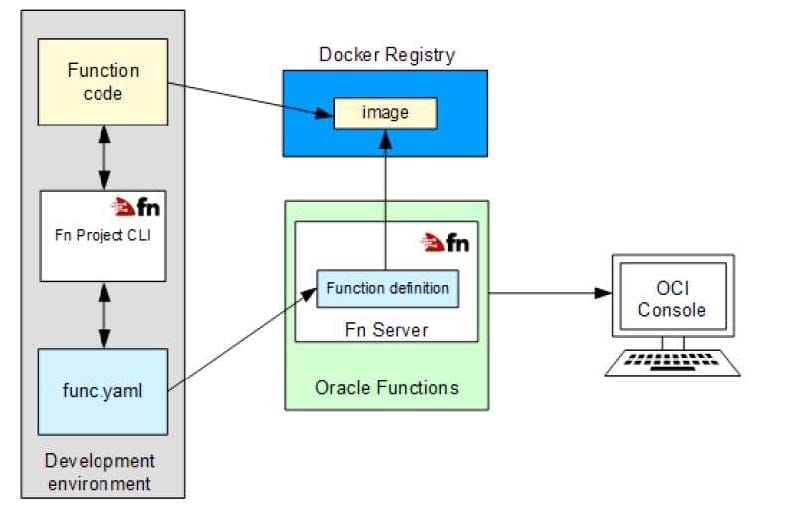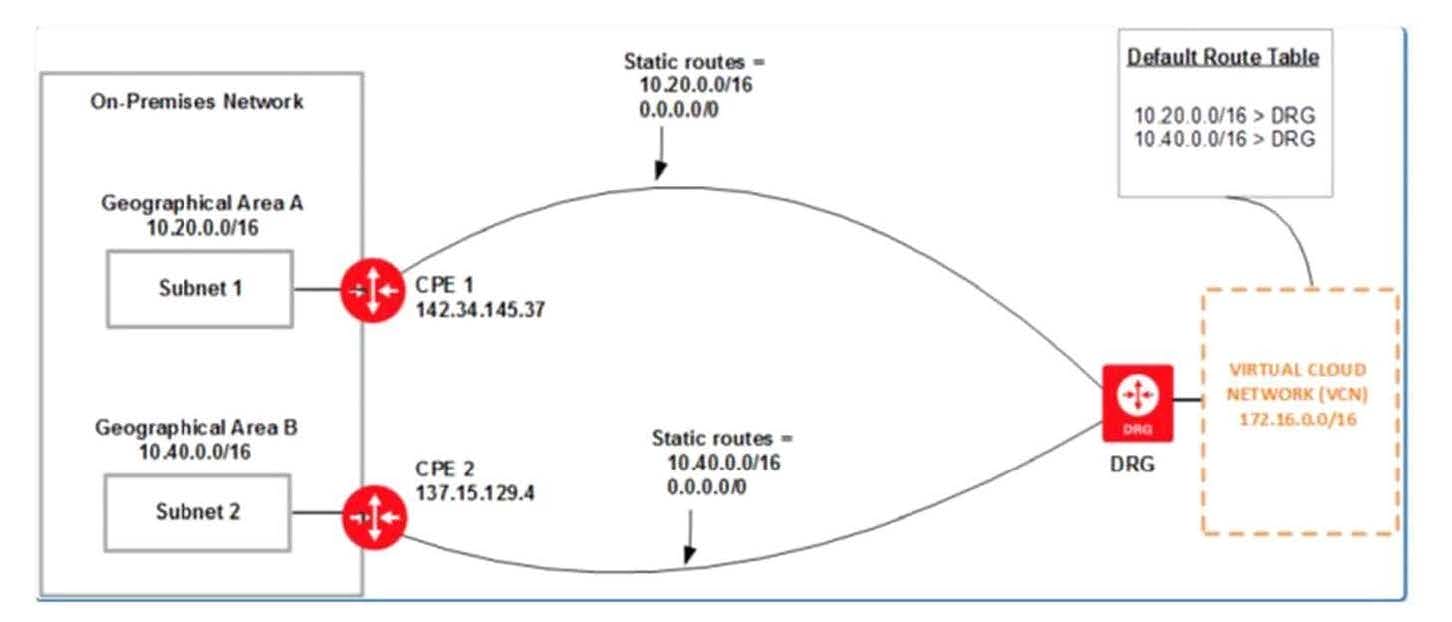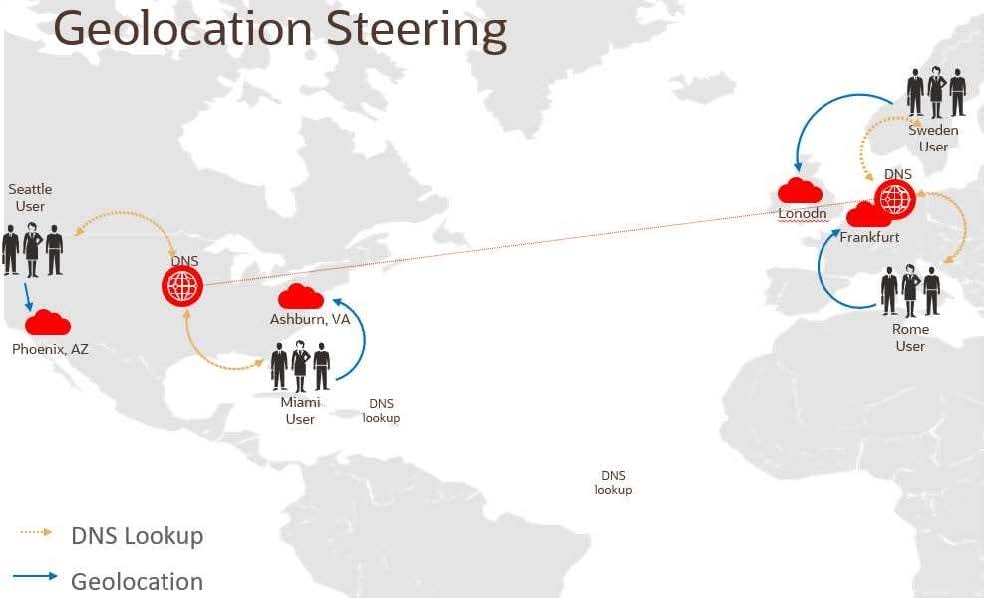Exam Details
Exam Code
:1Z0-997-21Exam Name
:Oracle Cloud Infrastructure 2021 Architect ProfessionalCertification
:Oracle CertificationsVendor
:OracleTotal Questions
:137 Q&AsLast Updated
:Mar 26, 2025
Oracle Oracle Certifications 1Z0-997-21 Questions & Answers
-
Question 121:
You are working as a cloud engineer for an IoT startup company which is developing a health monitoring pet collar for dogs and cats. The company collects biometric Information of the pet every second and then sends it to Oracle Cloud Infrastructure (OCI) Your task is to come up with an architecture which will accept and process the monitoring data as well as provide complete trends and health reports to the pet owners. The portal should be highly available, durable, and scalable with an additional feature for showing real time biometric data analytics.
Which architecture will help you meet this requirement?
A. Use OCI Streaming Service to collect the incoming biometric data. Use Oracle Functions to process the date and show the results on a real-time dashboard and store the results lo OCI Object Storage Store the data In OCI Autonomous Data warehouse (ADW) to handle analytics.
B. Launch an open source Hadoop cluster to collect the Incoming biometrics data Use an Open source Fluentd cluster to analyze the- data me results to OCI Autonomous Transaction Processing (ADW)to handle complex analytics
C. Create an OCI Object Storage bucket to collect the incoming biometric data from the smart pet collar Fetch the data horn OC\ Object storage to OCI Autonomous Data Warehouse (ADW) every day and run analytics Jobs with it
D. Use OCI Streaming Service to collect the incoming biometric data. Use an open source Hadoop cluster to analyze the data horn streaming service. Store the results to OCI Autonomous Data warehouse (ADW) to handle complex analytics.
-
Question 122:
An organization has its IT infrastructure in a hybrid setup with an on-premises environment and an Oracle Cloud Infrastructure (OCI) Virtual Cloud Network (VCN) in the us-phonix-1 region. The on- premise applications communications with compute instances inside the VPN over a hardware VPN connection. They are looking to implement an Intrusion detected and Prevention (IDS/IPS) system for their OCI environment. This platform should have the ability to scale to thousands of compute of instances running inside the VCN.
How should they architect their solution on OCI to achieve this goal?
A. Set up an OCI Private Load Balance! and configure IDS/IPS related health checks at TCP and/or HTTP level to inspect traffic
B. Configure each host with an agent that collects all network traffic and sends that traffic to the IDS/IPS platform to inspection
C. There Is no need to implement an IPS/IDS system as traffic coming over IPSec VPN tunnels Is already encrypt
D. Configure autoscaling on a compute Instance pool and set vNIC to promiscuous mode to called traffic across the vcn and send it IDS/IPS platform for inspection.
-
Question 123:
A global retailer has decided to re-design its e-commerce platform to have a micro-services architecture.
They would like to decouple application architecture into smaller, independent services using Oracle Cloud
Infrastructure (OCI). They have decided to use both containers and servers technologies to run these
application instances.
Which option should you recommend to build this new platform?
A. Install a kubernetes cluster on OCI and use OCI event service.
B. Use Oracle Container Engine for kubernetes, OCI Registry and OCI Functions.
C. Use OCI Resource Manager to automate compute Instances provisioning and use OCI Streaming service.
D. Use OCI functions, OCI object storage and OCI event service.
-
Question 124:
A retail company has several on-premises data centers which span multiple geographical locations. They plan to move some of their applications from on-premises data centers to Oracle Cloud Infrastructure (OCI). For these applications running in OCI, they still need to interact with applications running on their on-premises data centers to Oracle Cloud Infrastructure (OCI). for these applications running in OCI. they still need to interact with applications running on their on-premises data centers. These applications require highly available, fault-tolerant network connections between on premises data centers and OCI. Which option should you recommend to provide the highest level of redundancy?
A. Oracle cloud Infrastructure provides network redundancy by default so that no other operations are required
B. If your data centers span multiple, geographical locations, use only the specific IP address as a static route for the specific geographical location
C. Set up both IPSec VPN and FastConnect to connect your on premises data centers to Oracle Cloud Infrastructure.
D. Use FastConnect private peering only to ensure secure access from your data center to Oracle Cloud Infrastructure
E. Set up a single IPSec VPN connection (rom your data center to Oracle Cloud Infrastructure since It is cost effective
-
Question 125:
A global retailer is setting up the cloud architecture to be deployed in Oracle Cloud infrastructure (OCI) which will have thousands of users from two major geographical regions: North America and Asia Pacific. The requirements of the services are:
*
Service needs to be available 27/7 to avoid any business disruption
*
North American customers should be served by application running In North American regions
*
Asia Pacific customers should be served by applications running In Asia Pacific regions
*
Must be resilient enough to handle the outage of an entire OCI region
A.
OCl DNS, Traffic Management with Failover steering policy
B.
OCl DNS, Traffic Management with Geolocation steering policy. Health Checks
C.
OCl DNS, Traffic Management with Geolocation steering policy
D.
OCl DNS,' Traffic Management with Load Balancer steering policy, Health Checks
-
Question 126:
By copying block volume backups to another region at regular intervals, it makes it easier for you to rebuild applications and data in the destination region if a region-wide disaster occurs in the source region. Which IAM Policy statement allows the VolumeAdmins group to copy volume backups between regions '
A. Allow group VolumeAdmins to use volumes in tenancy
B. Allow group VolumeAdmins to copy volume' backups in tenancy
C. Allow group VolumeAdmins to manage volume-family In tenancy
D. Allow group VolumeAdmins to inspect volumes in tenancy
-
Question 127:
The Finance department of your company has reached out to you. They have customer sensitive data on
compute Instances In Oracle Cloud Infrastructure (OCI) which they want to store in OCI Storage for long
term retention and archival.
To meet security requirements they want to ensure this data is NOT transferred over public internet, even if
encrypted.
which they want to store In OCI Object Storage fin long term retention and archival To meet security
requirements they want to ensure this data is NOT transferred over public Internet, even it encrypted.
Which option meets this requirements?
A. Configure a NAT instance and all traffic between compute In Private subnet should use this NAT instance with Private IP as the route target.
B. Use NAT gateway with appropriate route table when transferring data. Then use NAT gateways' toggle (on/off) once data transfer is complete.
C. Use Service gateway with appropriate route table.
D. Use Storage gateway with appropriate firewall rule.
-
Question 128:
Which three scenarios are suitable for the Oracle Infrastructure (OCI) Autonomous transaction Processing Server less (ATP-S) deployment?
A. well established, online auction marketplace is running an application where there is database usage 24? but also has peaks of activity that the hard to predict when the peaks happen, the total activities may reach 3 times the normal activity level (Correct)
B. A small startup is deploying a new application fen eCommerce and it requires database to store customers' transactions the team b of what the load will look like since it is a new application. (Correct)
C. A midsize company is considering migrating its legacy on premises MongoDB database to Oracle Cloud Infrastructure (OCI). The database has significantly higher workloads on weekends than weekdays
D. A developer working on an Internal project needs to use a database during work hours but doesn't need It during nights or weekends. the project budget requires her to keep costs low. (Correct)
E. A manufacturing company is running Oracle E-Business Suite application on premises. They are looking to move this application to OCI and they want to use a managed database offering for their database tier.
-
Question 129:
Your customer recently ordered for a 1-Gbps Fast Connect connection In ap-tokyo-1 region of Oracle Cloud Infrastructure (OCI). They will us this to one Virtual cloud Network (VCN) in their production (OC1) tenancy and VCN In their development OC1 tenancy As a Solution Architect, how should yon configure and architect the connectivity between on premises and VCNs In OCI?
A. Create two private virtual circuits on the FastConnect link. Create two Dynamic Routing Gateways, one for each VCNs. Attach the virtual circuits to the dynamic routing gateways.
B. You cannot achieve connectivity using single FastConnect link as the production and the development VCNs-are in separate tenancies. Request one more FastConnect connection.
C. Create a single private virtual circuit over FastConnect and attach fastConnect to either of the VCN's Dynamic Routing Gateway. Use Remote Peering to peer production and development VCNs.
D. Create a hub-VCN that uses Dynamic Routing Gateway (DRG) to communicate with on-premises network over FastConnect. Connect the hub-VCN to the production VCN spoke and with development VCN spoke, each peered via their respective local Peering Gateway (LPG)
-
Question 130:
You are working as a solution architect for an online retail store to create a portal to allow the users to pay for their groceries using credit cards. Since the application is not fully compliant with the Payment Card Industry Data Security Standard (PCI DSS), your company is looking to use a third party payment service to process credit card payments. The third party service allows a maximum of Spelunk IP addresses 5 public IP addresses at a time However, your website is using Oracle Cloud Infrastructure (OCI) Instance Pool Auto Scaling policy to create up to create up to 15 Instances during peak traffic demand, which are launched In VCN private in VCN private subnets and attached to an OCI public Load Balancer. Upon user payment, the portal connects to the payment service over the Interne! to complete the transaction What solution can you implement to make sure that all compute Instances can connect to the third party system to process the payments aw peak traffic demand?
A. Route credit card payment request from the compute instances through the NAT Gateway. On the third-party services, whitelist the public IP associated with the NAT Gateway.
B. Create an OCI Command Line Interface (CLI) script to automatically reserve public IP address for the compute instances. On the third-party services, whitelist the Reserved public IP.
C. Whitelist the Internet Gateway Public IP on the third party service and route all payment requests through the Internet Gateway.
D. Route payment request from the compute instances through the OCI Load Balancer, which will then be routed to the third party service.
Related Exams:
1Z0-020
Oracle8i: New Features for Administrators1Z0-023
Architecture and Administration1Z0-024
Performance Tuning1Z0-025
Backup and Recovery1Z0-026
Network Administration1Z0-034
Upgrade Oracle9i/10g OCA to Oracle Database OCP1Z0-036
Managing Oracle9i on Linux1Z0-041
Oracle Database 10g: DBA Assessment1Z0-052
Oracle Database 11g: Administration Workshop I1Z0-053
Oracle Database 11g: Administration II
Tips on How to Prepare for the Exams
Nowadays, the certification exams become more and more important and required by more and more enterprises when applying for a job. But how to prepare for the exam effectively? How to prepare for the exam in a short time with less efforts? How to get a ideal result and how to find the most reliable resources? Here on Vcedump.com, you will find all the answers. Vcedump.com provide not only Oracle exam questions, answers and explanations but also complete assistance on your exam preparation and certification application. If you are confused on your 1Z0-997-21 exam preparations and Oracle certification application, do not hesitate to visit our Vcedump.com to find your solutions here.



